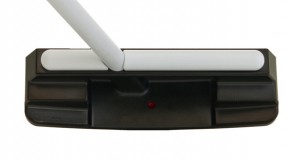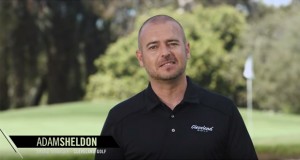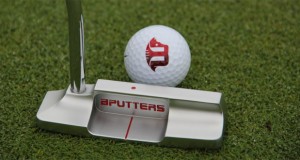 In honor of the U.S. Open, we take a closer look today at the modern tour putting stroke with V.J. Trolio, who is a teaching professional, co-inventor of the Putting Arc and a leading voice in the field of proper putting stroke mechanics. V.J. is based at Old Waverly Golf Club in
In honor of the U.S. Open, we take a closer look today at the modern tour putting stroke with V.J. Trolio, who is a teaching professional, co-inventor of the Putting Arc and a leading voice in the field of proper putting stroke mechanics. V.J. is based at Old Waverly Golf Club in
The Putting Arc is essentially a solution to the problem of an imperfect putting stroke. Can you describe why this problem afflicts so many golfers—and how you ended up developing a device that could solve it?
The reason many amateurs have such poor strokes is that they often lack the knowledge of what constitutes a good stroke. Secondly, they don
For years, the putting stroke was taught by “feeling” with no real measurements. Prior to the era of Dave Pelz (editor’s note: Dave Pelz is an influential short game instructor), many of the game’s greats established the concept of a putter stroke that moves inside to inside, just like the golf swing. With Pelz leading the research of the short game during the 1980s, the concept of the straight back and through putting stroke took hold. Along the way, short game instructors like Mike Shannon, Scotty Cameron, and Todd Sones were doing their research as well. They found that, in fact, the putting stroke moved in an arc. I had encounters with Pelz disciples and felt that it was very incorrect for the putter to move straight back and through. As a youngster I was a good putter and my stroke never felt the way they taught it. I have taken two putting lessons in my life, and both were from Mike Shannon. Mike was the first person to tell me that “the putting stroke curves.” After practicing his concepts, I called him up and asked, “How big is the curve?” He didn’t have an answer for me then.
So with the help of laser and video research, and the engineering minds of Dave and Joey Hamilton, the ellipse or arc of The Putting Arc was born. Ours was the first arc-type device to hit the greens and we feel very good about the explosion of “arc-type stroke” information that our product initiated.
What kind of feedback have you received on The Putting Arc from professional golfers?
Can you explain why you call the arc-type stroke “the perfect putting stroke?”
The arc-type stroke is the perfect stroke because the thorasic area of the spine (editor’s note: the area of the spine to which your ribs are attached) is neither vertical nor horizontal at setup. When the shoulders move, the throrasic area of the spine moves. So the plane of motion runs from the thorasic spinal area to the sweet spot of the putter. This is a very precise situation and the variables involved grow exponentially as soon as any other body part moves. So the arc-type stroke is also considered the perfect stroke because it has the fewest moving parts. The less parts that move under pressure, the better off we all are. It’s all really very simple when you look at the setup of the best players.
Do shaft placement (center shafted or heel shafted), putter balance (face balanced or toe hang) and/or moment of inertia impact the pursuit of an ideal arcing stroke?
The center-shafted putter versus the heel-shafted putter will not affect the arcing stroke. Now, every person has tendencies, and if the tendency is to leave the face open throughout the forward stroke, a heel-shafted putter with toe hang will enable them to feel the face staying square to the arc. The low point of the putting stroke is the spine, so the offset the putter has will change the hands position at address, the shaft angle at address, and the amount of loft used. However the basic geometry of a great putting stroke will utilize a plane angle that begins with the sweet spot of the putter and runs through the thorasic region of the spine. The sweet spot then rides that plane back and through with the face staying square to the projection of that plane on the ground and—bingo!—we have one less problem to deal with on the putting green.
Can you please specify a few basic setup tips that will help golfers make the most out of practicing with the Putting Arc?
The basic setup tips are to get bent over comfortably, with the eyes hanging over or just inside the line. From there, confirm that the back of the ball is even with, or up to a ball in front of, the low point of your putting stroke. Adjust your posture until your stroke automatically follows the arc, and the clubface always lines up with the lines on the Putting Arc. From there, wear out your Putting Arc and have fun making more putts.
Thank you V.J.! For more information, visit the Putting Arc web site and Trolio Golf web site.
 PutterZone – Best Putter Reviews
PutterZone – Best Putter Reviews




Th putting arc sounds so great, I like the part that says it has a mechanical sound when you hit the ball, very interesting.